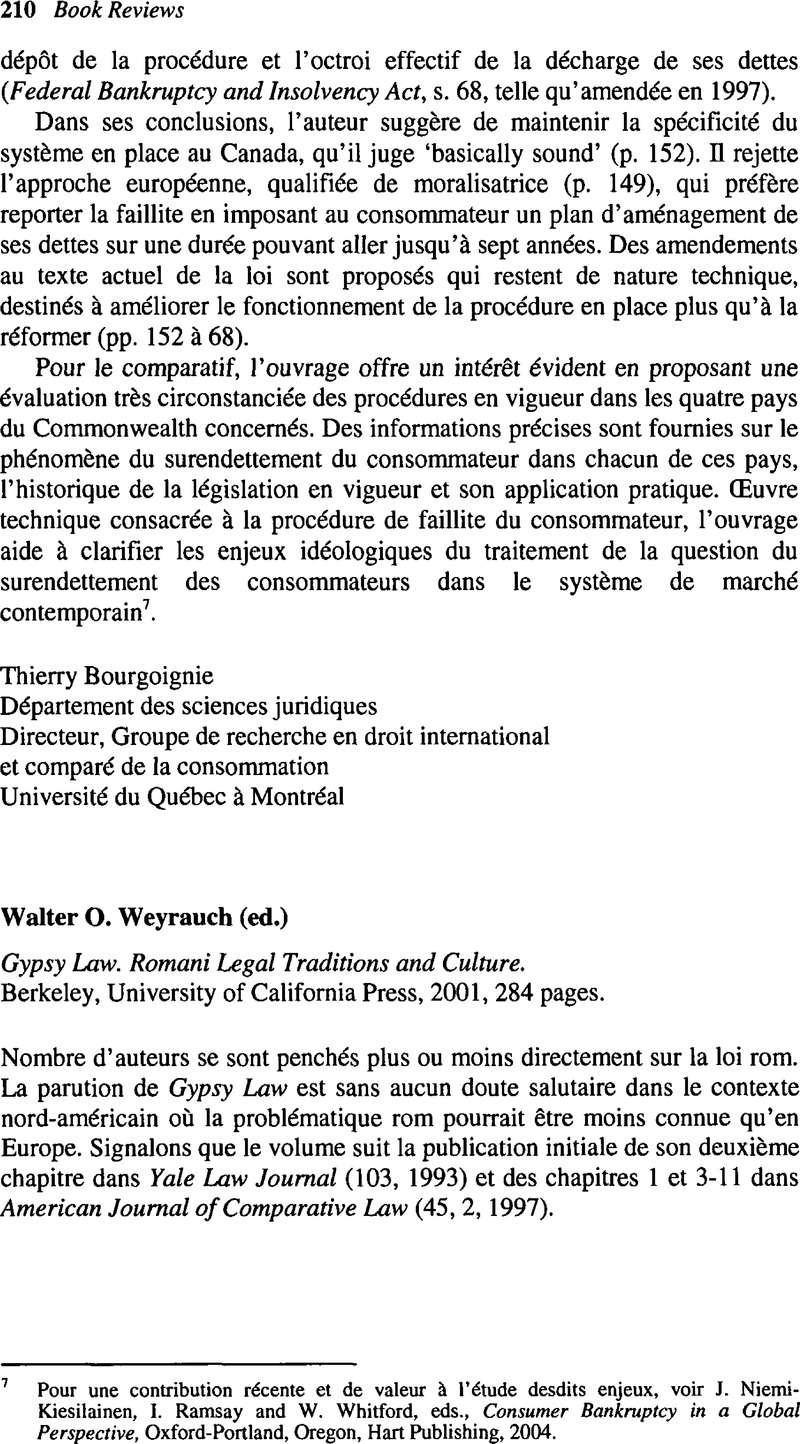No CrossRef data available.
Article contents
Walter O. Weyrauch (ed.), Gypsy Law. Romani Legal Traditions and Culture. Berkeley, University of California Press, 2001, 284 pages.
Published online by Cambridge University Press: 18 July 2014
Abstract

- Type
- Book Reviews/Comptes-rendus
- Information
- Canadian Journal of Law and Society / La Revue Canadienne Droit et Société , Volume 19 , Issue 1 , April 2004 , pp. 210 - 215
- Copyright
- Copyright © Canadian Law and Society Association 2004
References
1 Romanipen dans plusieurs textes européens. Étant donné que la langue romani n'est pas encore standardisée, on peut retrouver, à travers la littérature, plusieurs graphies pour un mot. Nous allons préférer celle utilisée par Weyrauch et Bell, auteurs du deuxième chapitre. Pour d'autres aspects sur l'orthographe et le lexique, se référer au glossaire de Ian Hancock, c. 8.
2 Au sujet de l'intimité culturelle, voir Herzfeld, M., Cultural Intimacy. Social Poetics in the Nation-State, New York, Routledge, 1997.Google Scholar
3 Nous pensons, par exemple, à l'anthropologue rom de Roumanie, Delia Grigore, qui a inclus plusieurs éléments du romanipen et des tabous roms dans son cours d'anthropologie donné à l'Université de Bucarest (www.romanothan.ro). Voir aussi les articles de The Patrin Web Journal: Romani Culture and History http://www.geocities.com/Paris/5121/patrin.htm.
4 Trigg, E. B., Gypsies, Demons and Divinities, Secaucus, N.J. Citadel Press, 1973.Google Scholar
5 Voir Reisman, M. W., 1993, «Autonomy, Interdependence and Responsibility» (1993) 103:2 Yale L.J. 401–17.CrossRefGoogle Scholar




